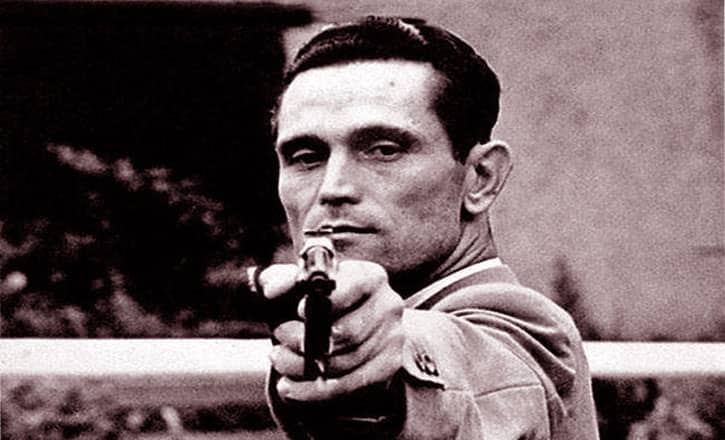Karoly Takacs (Hungarian name Chrom Károly Takács) (21 January 1910 – 5 January 1976) was the first shooter to win two Olympic gold medals in the 25-meter rapid fire pistol event, losing both his right hand and his left hand after being seriously injured.
He was the third known physically challenged athlete to compete in the Olympic Games after George Eiser in 1904 and Oliver Halasi in 1928, then Liz Hartel in 1952, Neroli Fairhall in 1984 and Oscar Pistorius in 2012. Karoly Takacs was born in Budapest and joined the Hungarian army. He was a world-class pistol shooter until 1936. Still, he was a sergeant, which is why he was denied a place on the Hungarian shooting team for the 1936 Summer Olympics, and only commissioned officers were allowed to compete. After the Berlin Games, the ban was lifted in Hungary, and Tokyo expected success at the 1940 Summer Olympics in Tokyo.
Table of Contents
When left became right for Karoly Takacs
Not much is known about Károly Takács childhood, perhaps because it was not so diverse. In fact, his life was like a roller coaster ride, which started after joining the army. Karoly Takacs, a sergeant in the Hungarian army, was a member of his country’s World Championship pistol shooting team.
During a training exercise in 1938, a defective grenade was blown into his right and shooting hands. The 28-year-old lost his half. After a month in the hospital, he practiced with his left hand but behind closed doors. When he took part in the Hungarian National Championships in early 1939, other shooters offered him sympathy.
They assumed he had come to watch the competition. Not only has he taken part in the country’s premier tournament, the right-hander has also won it in recent times. With the outbreak of World War II, the joy of victory increased.
1940 and 1944 Summer Olympics canceled
The 1940 and 1944 Summer Olympics were canceled. At the age of 38, the Tacos reached perhaps the most intense games for the 1948 London Olympics, mainly as Britain recovered from the rubble of destruction. Seeing this feature, it seemed that he also jumped on him.
Current world champion and record holder Carlos Enrique Diaz asked him in Science Valiant why Karoly Takacs was in London. The answer to the Budapest-origin crack shot was cryptic. “I’m here to learn,” he said.
Not only did Tacos strike out for gold, but he also improved his position in the world with 10 points. There was no exact charity in an unbroken valence during the medal ceremony. “You’ve learned enough,” the Argentine testified. Perhaps marked by his rival, Takas successfully defended his title at the 1952 Helsinki Games.
In the process, he became the first quick-fire pistol shooter to perform such an inquiry. He became a partner in the event at the age of 46, finishing eighth at the Melbourne Games in 1956. Through tragedy and victory, Takakus went from Hungary to shoot honorary coaches and mentors to other Olympians.
Károly Takács Olympic Medals
Shooting at the 1948 Summer Olympics Men’s 25-metre rapid-fire pistol
Shooting at the 1948 Summer Olympics Men’s 25-metre rapid-fire pistol
Shooting at the 1952 Summer Olympics Men’s 25-metre rapid-fire pistol
Karoly Takacs Quotes
Late life
Karoly Takacs retired from the army as a lieutenant colonel. He also did coaching for some time, but he was not very successful in coaching. But all this does not come.
His achievement in the shooting is enough to make him memorable. In 1976, he died at the age of 66. His colorful life stops. There is so much to learn from Carolyn’s life. Many of us give up easily and go back in fear.
Károly Takács did not give up even after losing her most important organ, but came back, reaching her goal. Those who can move both hands equally are called Sabyasachi.
It was another name for Arjuna, the third Pandava of the Mahabharata. Károly Takács herself was a Sabyasachi. The difference is only in one place. Arjun was a legendary hero, and Károly Takács was an ordinary shooter who lost his hand in an accident made of blood!

